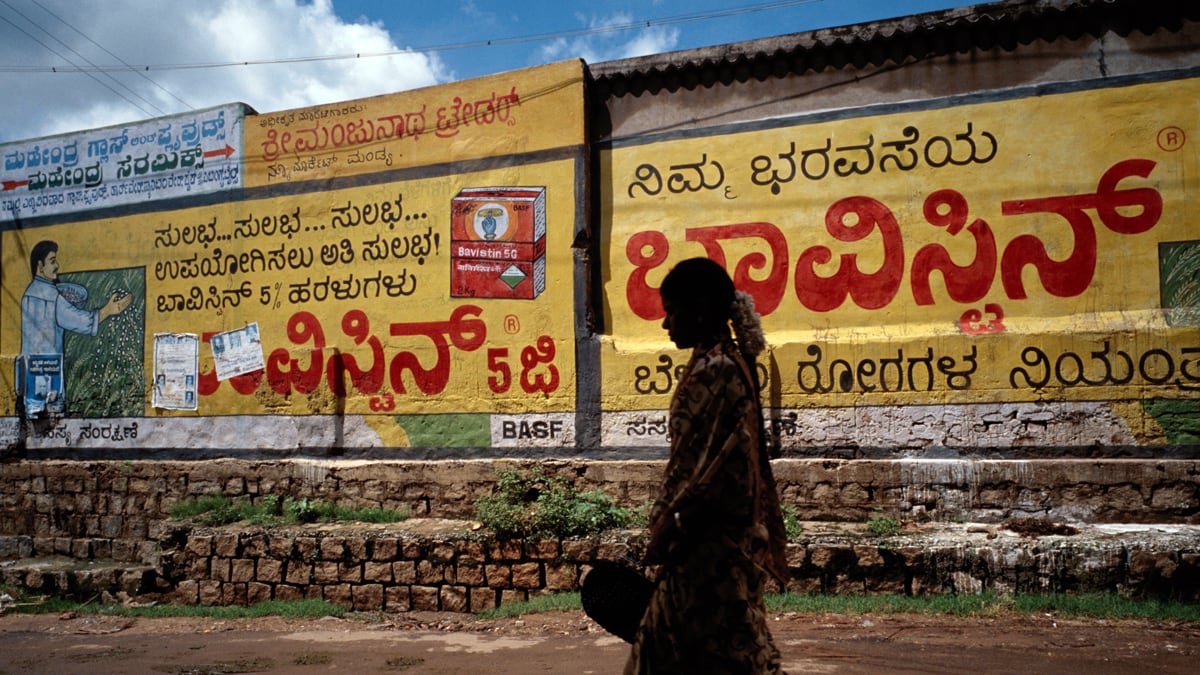I grew up, as many Indians do, in an archipelago of tongues. My maternal grandfather, who was a surgeon in the city of Madras, was fluent in at least four languages and used each of them daily. He spoke Tulu with his wife, Kannada with his daughters, Tamil with his patients, and English with his grandchildren. In my hometown of Mangalore, on India’s southern coast, it was common for a boy of my generation to speak one language at home, another on the way to school, and a third one in the classroom. These were not just dialects or variants, either. Kannada, which I spoke at home, and Hindi, which I had to learn in school, belong to different linguistic families and are as dissimilar as, say, Spanish and Russian.
Columbia University, where I went to study in 1993, insisted its undergraduates learn a foreign language, so I discovered French. I remember the thrill of sitting in the Hungarian Pastry Shop on the Upper West Side of Manhattan and working my way, over the course of a week, through an entire André Gide novel in the original French. In England, where I studied in the late 1990s, I took a class in German, having heard that its peculiar syntax and word structure posed not just a linguistic, but a cognitive, challenge: German speakers apparently thought about the world in an entirely different way.
By the time I returned to India in 2003, I had been speaking, reading, and writing almost exclusively in English for more than a decade. Nothing much changed after I moved back. The international success of novelists such as Arundhati Roy and Vikram Seth meant that most younger Indians in the big cities wanted to read and write in English. There were novelists, such as Kiran Nagarkar, who worked in both English and an Indian language, but bilingual proficiency of this kind was increasingly rare. The glamour, acclaim, and money were in English; why read or write in anything else?
My life is now divided between the cities of Bangalore and Mumbai. About a year ago, I decided to read only in Kannada, the dominant local language, whenever I visited Bangalore. My reasoning was partly pragmatic. Regional-language newspapers in India have a richness of local detail that is often absent in the country’s English media. A friend tells me of the time he was on holiday in Nainital, a lake city in India’s north. He was about to take a walk around the lake when an article in a Hindi newspaper reported that a man-eating leopard was on the loose. The English dailies had not reported this. He now buys the Hindi paper whenever he visits Nainital. Some of India’s best writers, such as playwright Girish Karnad and novelist U.R. Ananthamurthy, work in Kannada, and I keep discovering excellent writers who will probably never be translated into English.

Access to new information—literary or political—is one advantage of becoming functionally bilingual, but it is not the main one. We have all laughed at the immigrant who translates phrases from Italian or Arabic directly into English, but it is equally true that the pressure of another language can mold English prose of exceptional beauty. The influence of Yiddish, for instance, is said to give Saul Bellow’s writing at least some of its quirkiness and power, and even as quintessential Anglo-Saxon a writer as Edward Gibbon worried that his long stay on the Continent had made his prose too “Gallic.”
The strangeness of Kannada starts with the script—rounded and regular, except when it becomes flamboyant with loops and dashes—so unlike the Roman alphabet. If you did learn to read it, you would discover the alienness of the syntax and structure. Kannada is an inflected language, so you tend to drop what is most important in an English sentence: the subject. It is enough to use one word, Mathaadida, where you would need two in English: “He spoke.” When I leave Bangalore and travel in the countryside, I find so much that can be properly named only in Kannada: raagi mudde, the staple food of people in the countryside, is drained of its taste when it becomes “finger-millet gruel.” Far away from the big city, when I am talking and reading only in Kannada, the language becomes for me what German must be for those who have learnt it well enough: a new way of understanding the world.
Sooner or later, I miss Mumbai and fly back. And here I switch to English. It is revealing, what you long for, after going without English for a few days. I want to read Keats and Wordsworth, Hemingway, George Orwell. For days I’ve been thinking of all the Kannada phrases I could never say in English. And now I wonder, can you really translate G.K. Chesterton into Kannada? Can you translate A.E. Housman? I find so much that seems counter, original, spare, and strange in this language that I have spoken for 37 years. And this is the best reason for a writer to become bilingual: to discover what English can do that no other language on earth can.






